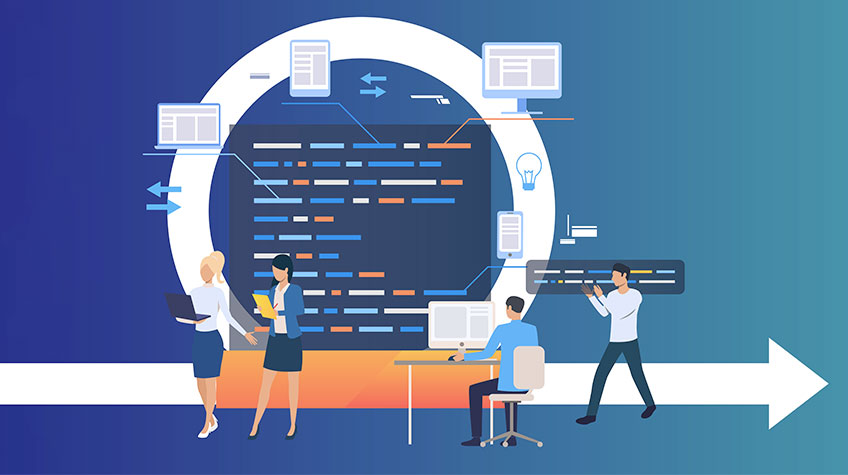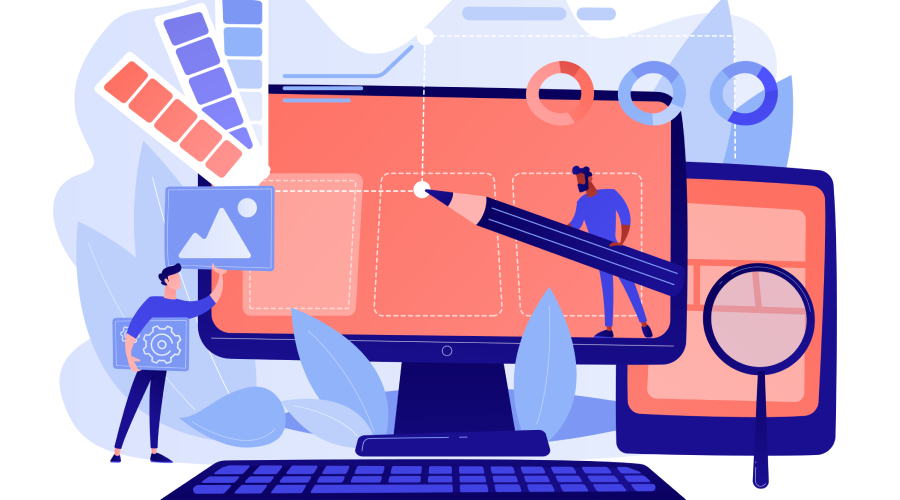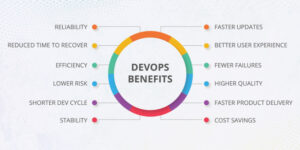
Software development workflows can have a significant impact on the quality of your team and the quality of your services.
With an adaptable software development workflow, it will be easier for your developers to stay on schedule. It will also reduce engagement and align with your business goals.
This article will look at how to create adaptable and scalable software development workflows and optimize them effectively.
What is a Software Development Workflow?
It ties together a series of tasks in the software development stages, also known as the software development life cycle (SDLC). It allows the software development team to continue developing custom solutions like WooCommerce pre-order in a well-planned manner.
As a step-by-step process, the software development workflow describes the actions to be taken at each stage and provides recommendations for product expansion.
In this way, with good planning of workflow, the software developers can:
- See a larger image of the project.
- Clarify each person’s responsibilities.
- Understand how their work contributes to the overall project.
- See any project obstacles.
- To effectively prevent and solve any challenges that may appear during app development.
- Better share distribution
- Improve their performance in the current project and other construction projects.
Stages of an Adaptable and Scalable Software Development Workflow
Below are six primary stages defining the workflow of software development.
1. Planning and Analysis
Planning and analysis is the first step in the SDLC cycle. It defines the number of examples of projects that will further influence the development of programs. The software development team determines the business and technical requirements in this phase.
2. Product requirements
The team software development determines the scope of the product, what features, functions, and services should be included in the application being developed, its structure, special collections, and other things.
3. Business requirements
Business requirements include the customer’s needs for the product being developed, its goals and objectives, a branding strategy that needs to be tailored for the application, and more.
4. Project requirements
Project requirements include defining roles in the Software Development Life Cycle (SDLC) within the team, work plans, resource allocation, risks and issues, and how to prevent it.
During this phase, there is a lot of communication between business analysts, project managers, partners, and developers. The outcome of the planning and review phase should be an emphasis on project documentation and a well-defined strategic plan.
The project documentation can include information, user stories, user examples, prototypes, and more. The project plan should include a description of the development process, timeline, milestones, purchase, and sale.
5. Product Design
At this stage, the product design is built from the data of the following requirement. The product design helps to define the necessary tools needed to manage the product, in other words, the installation.

It also helps to clearly define the product’s structure, showing the use of software to develop their relationships.
It’s also time to choose development standards, such as .NET, Java, Laravel, Ruby on Rails, or FileMaker. This choice depends on their needs and the basis often used in the company.
In addition, the user interface and user interaction are developed at this stage. They incorporated user-developed software applications and key features of a user-friendly and modern user interface.
6. Coding
At this stage, developers begin the process of creating a product. The steps software developers take during development are primarily determined by the chosen method.
There are many development methods, but the most popular are Waterfall and Agile.
The waterfall is often chosen to build niche software with specific, precise design needs, such as medical software, aviation, and other niches requiring precision.
Agile is more famous for creating software for different business niches where people need solutions that significantly affect development.
Therefore, with the help of Agile, software developers can quickly adapt to new needs and add or remove some parts, quickly change elements of the final product, and more.
7. Testing
After the classification and implementation phase, the team can move on to integration and validation tests. Test procedures should be organized, defined, and documented.
In a development team, a well-documented system contributes to efficient communication processes. Good planning means creating well-thought-out and practical projects based on a good understanding.
End-user testing is usually done in the last stages of software development. Involving developers in product testing can help identify and resolve issues before release to reduce delays.
It is possible to create bug tests and similar reports for multiple Agile teams using the tool’s modeling tools. These tools eliminate confusion by creating error reports that are easy to track and understand.
Automating and increasing the number of tests can also speed up the workflow. Consider automated testing to reduce the burden on QA testers and set standards for test methods.
Also See: 13 Effective Tips for Software Testing
8. Deployment of the Product
After the software product has passed the testing phase, you can start installing the product. Once the product is ready, the first phase is rolled out and open to the public. This is called beta testing.
If changes are required due to customer feedback or bugs not noticed during testing, they can be banned. We are working in this direction of software development.
Deployment usually involves setting up a server called “production” where the software will be used.
Such a server can be in the company itself or the “cloud” using, for example, Amazon Web Services or Microsoft Azure. After installation, the next part is Maintenance and Operation.
9. Maintenance and Operations
Once all the steps mentioned above have been completed and the software has been released to the market, the product must remain in working order, and the maintenance of the product is also required.
This includes troubleshooting and updating systems with new operating systems installed or third-party software updates.
In the case of a significant increase in the use of a hardware device, additional processing power, memory, or data capacity may be necessary to ensure smooth operation.
10. Embrace Agile Development
Another critical feature that will help you streamline your workflow is using agile development techniques. This will help you reduce your development time and deliver better products faster.
You can try to have remote workers take turns serving people. The interaction of everyone with customers will help to improve the flow of ideas. At the same time, it will help you quickly implement the right features and stay ahead of the competition.
Many chatbots offer Slack integration, which can be a great way to give your remote developers the ability to interact directly with clients whenever possible.
The use of agile development methods will help you to increase the efficiency of your work with developers.
When working with independent developers, taking advantage of the flexible workflows that Agile practices allow is essential.
Takeaway
The workflow is achieved through the contribution of each member of the team: for this reason, its effectiveness depends on the experience accumulated by the team the same.
It is essential to use retrospectives, code reviews, and any team meetings to evaluate the workflow and have an essential way to improve it in each sprint.
Equally important is the use of available tools such as those mentioned above, many of which are accessible on the Internet. It continues researching and experimenting with new methods.
As the technology market is changing, development methods must keep pace with new customer needs and technology developments.
The main idea is to find a shared and accepted project by all team members and be bold in changing any decision made as soon as you notice that something starts to work differently than you expected.
In Agile, changes are always recommended if used iteratively and sequentially.






